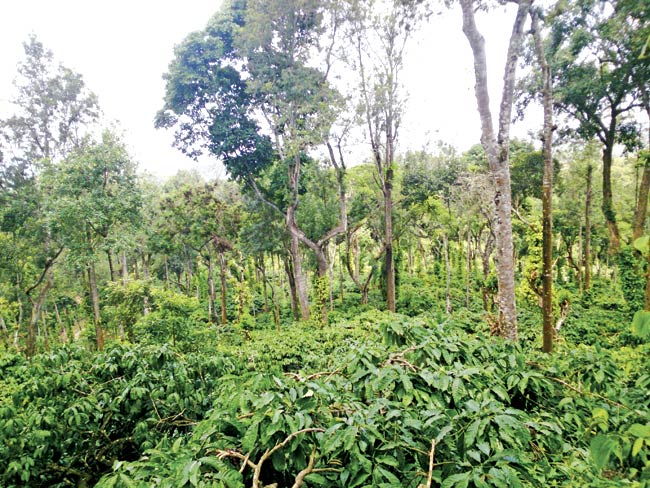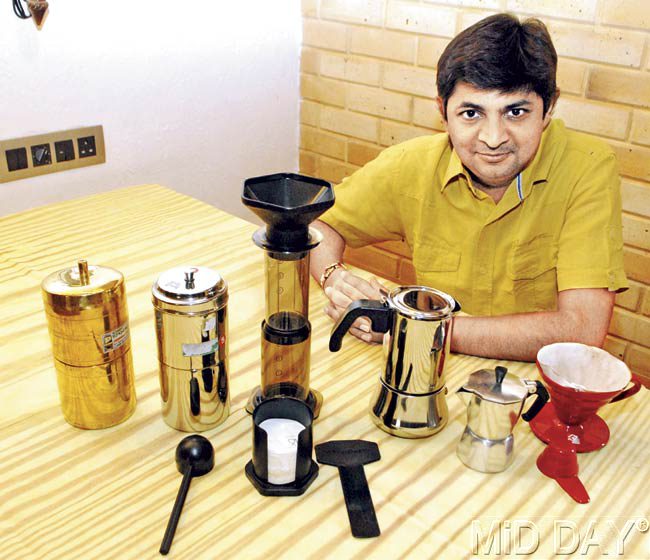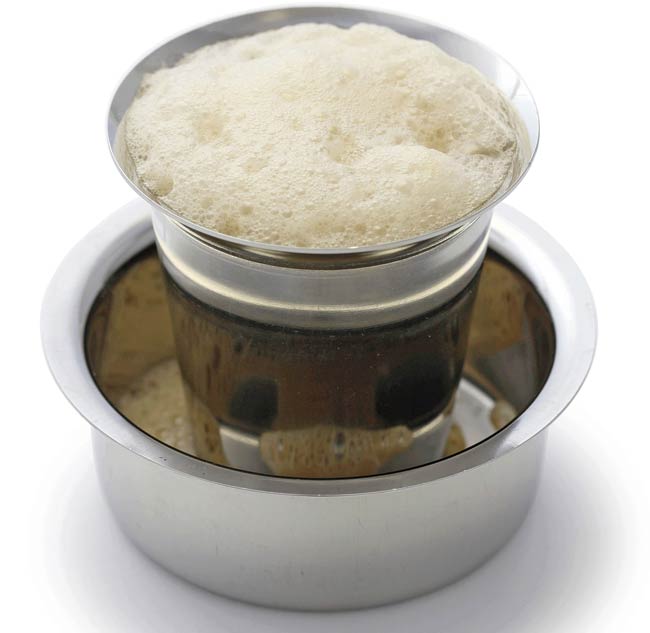Once confined to South India, coffee has emerged into pan Indian beverage, not just at cafes but also in homes. However, the coffee industry is facing several challenges due to shortage of labour in its estates and plantations. Hassan M Kamal investigates
There’s a story that claims how nearly 400 years ago, a Sufi poet named Baba Budan smuggled coffee beans from Mocha (Yemen), to the hills of Chikmagalur in Karnataka. While there is no recorded evidence to prove this story, it has remained a popular folklore among India’s coffee lovers.
The presence of a controversial shrine of the Sufi saint on top of Dattagiri (or Baba Budan) range of the Western Ghats, watching over the coffee estates of Chikmagalur, further lends credence to the belief. After its arrival, over the next four centuries, coffee grew to become an integral part of South Indian culture.

Different communities and cities came to master the art of growing coffee, roasting and brewing a fine concoction from the coffee beans, in their own way.
Aromatic trail
“Even today, there are several households in South India who roast their own batch of coffee beans in the kitchen, grind it and prepare a decoction that suits their needs,” shares Dr Ashwini Kumar BJ, who holds the Coffee Board Research Chair at the Indian Institute of Plantation Management in Bangalore.

Their methods have created specialty coffees, which are in huge demand in the Western markets as well as location-centric versions of Indian filter coffee like the Degree coffee of Kumbakonam in Tamil Nadu (most popular among Tamilians), Coorg coffee and Chikmagalur coffee, each known for its unique taste, informs Dr Kumar (check box for details).

The equipment to make the popular Indian filter coffee is proof of how engrained the beverage is in the daily life of a South Indian. While the origins of the filter coffee maker aren’t documented comprehensively, according to photographer K Suresh, a die-hard coffee lover, the earlier method required keeping ground coffee wrapped around a cloth dipped in a pot of water overnight.
“My grandma would make fresh coffee every morning; jaggery was used to sweeten it. Sugar was reserved for tea,” he recalls. He still sources coffee beans from Mangalore, but also vouches for beans sold at Philips Tea and Coffee in King’s Circle, a locality famous for its authentic coffee. “The process continues with the Indian filter coffee makers, even today.
The ground coffee is kept inside a chamber and filled with hot water. Overnight, the coffee filters down into a chamber right under it, giving the final decoction a strong flavour,” says Jignesh Shah, a Mumbai-based coffee entrepreneur. He adds that in most South Indian families, there’s a tradition of offering the first drink from the brew to the head of the family in the morning.
Arrival of new coffee fans
Shah comes from the new breed of coffee lovers, who are not South Indian, but have acquired a taste for this beverage, and see coffee as an item that needs to be appreciated. “Most Indians have been cheated with, when it comes to coffee, as we have never got anything beyond instant coffee. Coffee is more than that,” says Shah.
He adds that the beverage is gaining popularity among other communities, including the tea-crazy North Indians. “And, I’m not referring to a Barista, Cafe Coffee Day or Starbucks outlet (though they played a role in popularising coffee) or drinking instant coffee from vending machines, but coffee fans who want to prepare it from scratch in their own homes.”
Shah recently launched his brand of coffee, Jewel Aromantic, and has also been conducting workshops and taking classes, teaching Mumbaikars how to brew coffee at home. One of his focus areas has been making inexpensive fuss-free coffee makers like the Italian Moka Pot (comes for just Rs 500), Indian Filter Coffee maker (Rs 500) and the most-recent Aero Press (Rs 2,500), now available in India.
“Most of us are only aware of instant coffee or the expensive espresso machines. But there are several other equipments like the Moka Pot, the Aero Press or the Indian Filter Coffee Maker, which are inexpensive and easy to operate. Now, people are exploring these options, and loving them,” he adds, adding, “Some devices like the Aero Press and Indian Filter Coffee Maker doesn’t require any heat source.”
Home of specialties
India grows two types of commercial coffees Indian Robusta and the Indian Arabica. Earlier, most of the produce used to be the Indian Arabica, which is still in huge demand internationally. But since Arabicas are prone to pests, most coffee estates have moved to the Indian Robusta. “It has a much more stronger taste than the Arabica, and though it was initially not considered good, and still fetches lower prices internationally, it’s gaining popularity in the market,” says Shah.
Dr Kumar says that what gives Indian coffee a special place internationally is its unique coffees, which are referred to as Specialty Coffees. “The three specialty coffees produced in India are Monsooned Malabar, Mysore Nuggets and Robusta Kaapi Royale. All these coffees vary in their cup characteristics, and are popular internationally,” he adds.
India is also gaining popularity for its unique animal coffee, the Monkey Parchment coffee, a rare type of coffee made from beans chewed by Rhesus monkeys. The coffee is produced in Chikmagalur, Karnataka.
“The monkeys select the best coffee cherries, pick them, chew them leisurely for a few minutes and spit the remainder of the fruit onto the ground.
These discarded fruits are collected, rinsed, washed and processed using water to remove the pulp (parchment), and then dried. The enzymes in the saliva of the Rhesus monkey initiates a chemical process, giving the beans a different taste and colour,” says Shah.
Challenges galore
But all is not good with the coffee estates, located mostly in the Western Ghats. In the last few years, there had been several reports of labour constraints in Indian coffee estates. “Most of India’s coffee is grown in undulating slopes of the Western Ghats.
The coffee plantations are experiencing a severe shortage of labour for undertaking key farm operations, such as manuring, application of fertiliser, harvesting and farm-level processing. While larger plantations have initiated efforts for mechanisation, medium and small plantations continue to incur higher costs on labour, thereby reducing their surplus for capital investments,” says Dr Kumar.
According to a report by The Seattle Times, some plantations in India have begun offering good-quality housing, medical care and other benefits to attract labour. But it’s been of no help. Another major problem is the low level of value addition at the farm level, informs Dr Kumar.
“The value addition of coffee takes place at the level of roasters and retailers. But since most of our coffee is exported as green beans (unprocessed), most Indian coffee producers become very susceptible to the fluctuations in international prices. Higher value addition and domestic consumption could reduce the susceptibility of producers to the drastic price fluctuations that are currently seen in primary markets of Indian coffee,” he adds.
Another concern emerges from lower production due to unseasonable and fluctuating rainfall. “While the consumption of Indian coffee has increased, the productivity of Indian coffee plantations has been stagnant,” reveals Dr Kumar adding that India should produce more coffee to meet the domestic demand and exploit opportunities that emerge from a growing international demand for Indian coffee.
___________________________________________________________________________________________
Grades of Indian Coffee
Grading of coffee primarily refers to the segregation / classification of coffee beans based on their size. The primary grades of Arabica Coffee are Peaberry, AB, A, B, C, Blacks/Browns, Bits and Bulk. The primary grades of Robusta Coffee are Peaberry, AB, C, Blacks/Browns, Bits and Bulk.
Bits and Bulk are the most inferior in the lot and used to make instant coffee. In India, coffee is also categorised based on taste like Monsooned Malabar, Mysore Nuggets and Robusta Kaapi Royale. Based on the region of production in India, 13 regional coffees have also been defined.
They are Anamalais, Araku Valley, Bababudangiris, Biligiris, Brahmaputra, Chikmagalur, Coorg, Manjarabad, Nilgiris, Pulneys, Shevaroys, Travancore and Wayanaad.
Improve your coffee quotient
What’s roasting?
Roasting is a process that helps bring out the aroma and flavour of coffee.
______________________________________________________________________________________________
The major techniques for roasting coffee beans are Rotating cylinder or drum roasting where the coffee beans are fed into a cylinder through which hot air is passed and the drum rotates; and fluidized bed roaster where gases entering into the fixed chamber of the roaster lead to the beans’ rapid turbulent circulation (levitation).
Following roasting, the beans are cooled and run through a destoner that uses air to remove stones and other extraneous materials. The roasted beans are then ground by using grinders.
source: http://www.mid-day.com / MidDay / Home> Life and Style News> Food News / by Hassan M Kamal / September 27th, 2014





